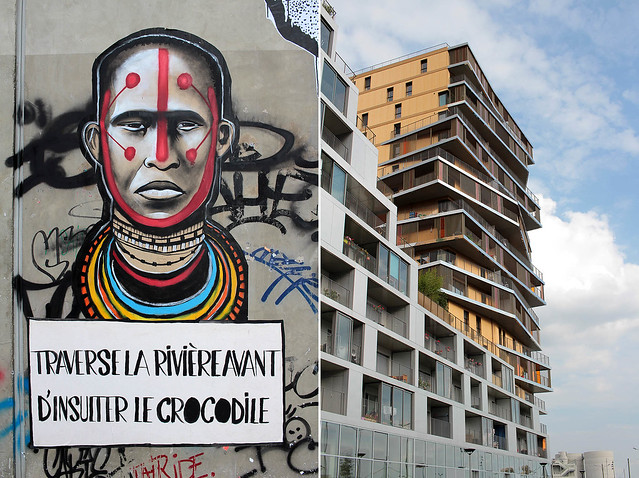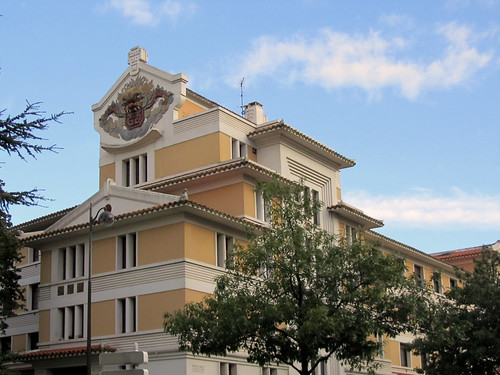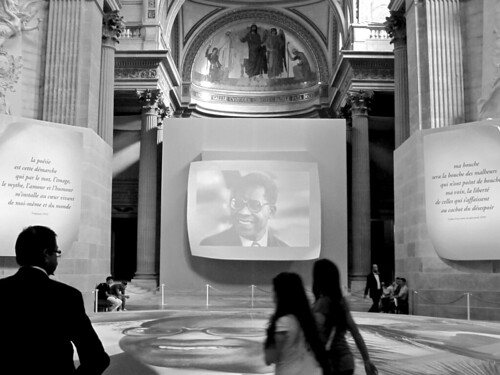In the southeast corner of the 13ème lies a growing neighbourhood: contemporary block architecture dominates, the façade of each building are attention-grabbing in a different way than the Haussmanmians, and there’s not a lot that’s conventional about many of these structures. From twisted floors to glass-filled walls, from disorderly-placed windows to size-varied windows, from unicolour walls to multi-colours panes, uniformity is not the name of the game and yet they all blend in quite harmoniously with one another.


Continue reading »
In many parts of the world, mosques are out-of-bound for non-followers. I’ve even known of mosques which clearly sign-posted that non-Muslims are strictly prohibited to enter. Add to the fact that I’m female, getting access to the compound within these mosques would be even trickier, especially in accordance to traditionalists, Muslim women should preferably pray at home, or otherwise be segregated to a separate room or at the back of the prayer hall or behind certain barriers, not side by side with the men.
Of course, that is not always the case. In certain cities or countries, mosques can be visited by non-Muslims outside of prayer sessions, provided certain guidelines such as appropriate attire and respectful observations are adhered to. This is the face of Islam that is encompassing, encouraging deeper understanding than beyond the portrayals in the media which are often misunderstood and maligned, and fostering links with the community at large regardless of the religion its individual practices.

The Great Mosque of Paris (La Grande Mosquée de Paris) is one which doors are open to all. Built in the 1920s in commemoration of the valiant Muslim tirailleurs who fought on France’s behalf, it has even once transformed into a hidden sactuary for Jews who were being persecuted during the Holocaust. Today, it aims to foster community relationships with believers and non-believers alike, and our guide couldn’t emphasise enough that their duty is to forge understanding that Islam is peaceful by nature and unity belies its core teaching.
Continue reading »

Rue St Jacques is one fairly long street at 1.55 km – although not quite as long as rue de Vaugirard, which stretches across 4.36 km in the southside of the city – and along it, some interesting architecture features from different periods of time, right from the medieval to the contemporary, can be found.
Of course, innovative restauranteur could also go one up, like this front façade of an Indian restaurant that has been elaborately decorated in the orient style. From what I gather, the theme is carried through the interior of the restaurant too. A colleague mentioned that their food is quite good, so perhaps I should give that a go sometimes soon.

From boulevard Jourdan, I have on a number of occasions noted this particular building, hidden away on rue Faguet. Curiosity abound, I detoured through today to check for the significance of the building. It turns out that this is actually one of the many houses within Cité U. This is the South-East Asian House.
Prior to this revelation, I was wondering if it’s a temple of some sort. Afterall, Buddhism is the third largest religion in the country and a friend previously told me that there are a couple of hundred Buddhist meditation centers and temples here. I admit to being a tad disappointed that my initial theory was not a correct one. Still, it’s a rather nice building and photos from Cité U website show impressive interiors too.

For a couple of weeks, from what I gleaned, the Panthéon was closed to the public in preparation to pay an hommage to Aimé Césaire on the eves of the 3rd anniversary of his death. A poet, writer and politician in his lifetime, he was deemed an inspiration and defended not only the Martinican identity but also of black Africans under colonial rules. He was the champion of civil rights movement in French-speaking overseas territories and islands.
Unlike many who were interred at the Panthéon, Césaire’s remains was not exhumed and brought to Paris, in accordance to his will. Instead, the commemoration came in the form of a dedicated plaque, unveiled in a ceremony on 6 April by President Sarkozy.
The Panthéon has since reopened and until Sunday (10 April) entry is free of charge, although when I dropped by today with Brian and Ivan, many sections of the crypt are still out of bound and the famous Foucault’s Pendulum in the great hall has been temporarily removed.


















